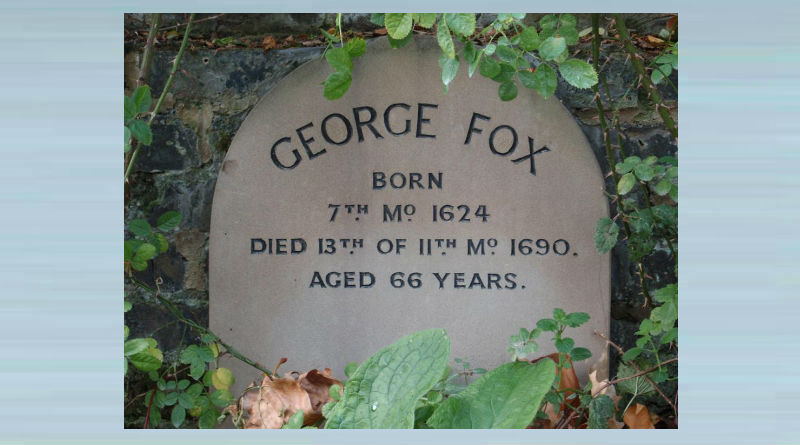23. Gravestone Of George Fox
Posted on 16 January 2020
The Gravestone of founding Friend George Fox is an example of a Quaker burial.
Quaker Burials
For early Quakers, in some cases, the burial ground was the first piece of land acquired by a Quaker meeting and many pre-date the building of the Meeting House next to them.
From the mid-17th century, Quakers were either denied the right to bury their dead in the parish graveyard, or chose not to.
To begin with they carried out burials in gardens and orchards, but they began to acquire their own burial grounds – following guidance from Fox. He urged Friends to ‘buy decent burying-places’ and to ‘let them be decently and well fenced’.
Today, Friends are free to choose a burial or a cremation and/or can have a non Quaker funeral.
Bunhill Fields Burial Ground
Fox is buried at the Quaker burial field next to the BunHill Meeting House, Islington, north London. Nearby is the Bunhill cemetery, which became a popular burial ground for Non-Conformists denied a traditional burial by the Church of England.
Among those buried and commemorated at Bunhill include:
William Blake (1757 – 1827) poet, printer and painter best known for the poem that became the hym Jerusalem.
Daniel Defoe (1660 -1731), novelist best known for Robinson Crusoe and Moll Flanders
John Bunyan (1628-1688), soldier turned preacher and author Pilgrim’s Progress.
Susannah Wesley (1669-1742), The mother of John Wesley (founder of the Methodist Church).
It is remarkable that the originators of so many of our cultural references lie in such close proximity in this soil.

Bunhill Fields Burial Ground
Image from commons.wikimedia.org/






